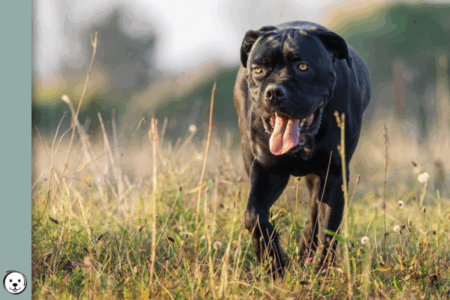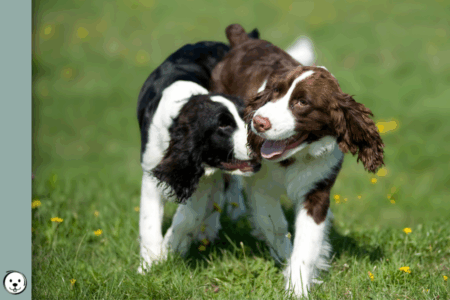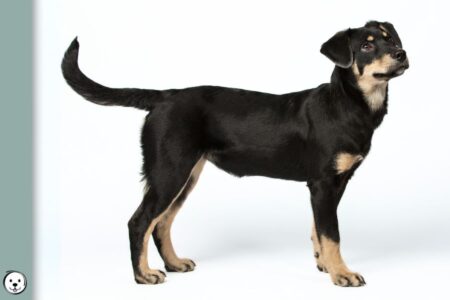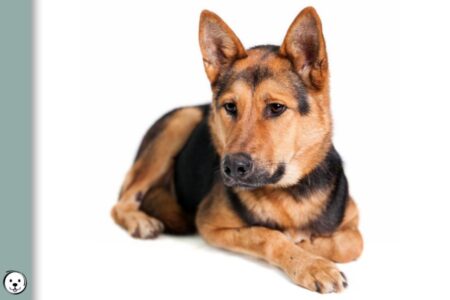Learn more about the black and silver variety in Miniature Schnauzers.
Is Black & Silver A Standard Color In Miniature Schnauzers?
Yes, both the AKC and the FCI accept black and silver.
What Does A Black & Silver Miniature Schnauzer Look Like?
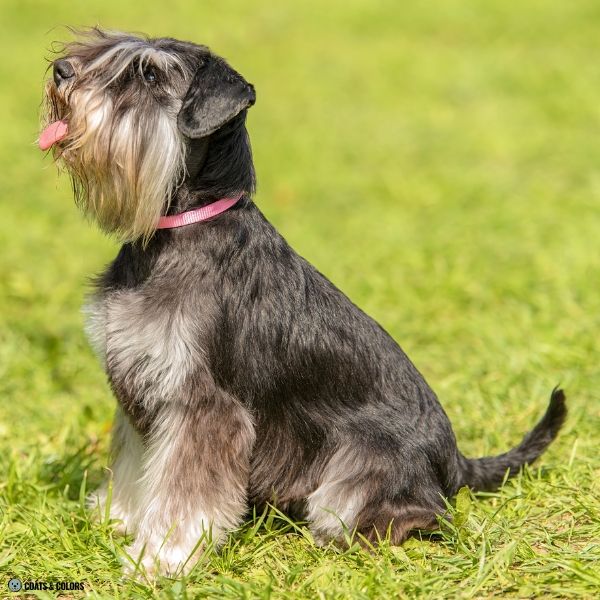
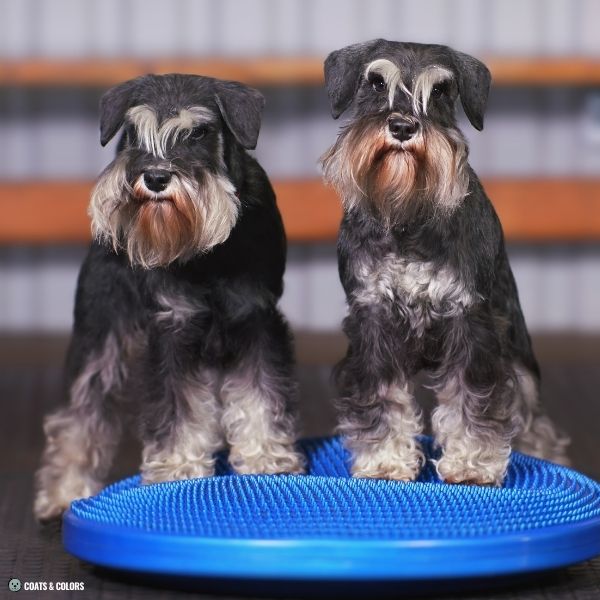
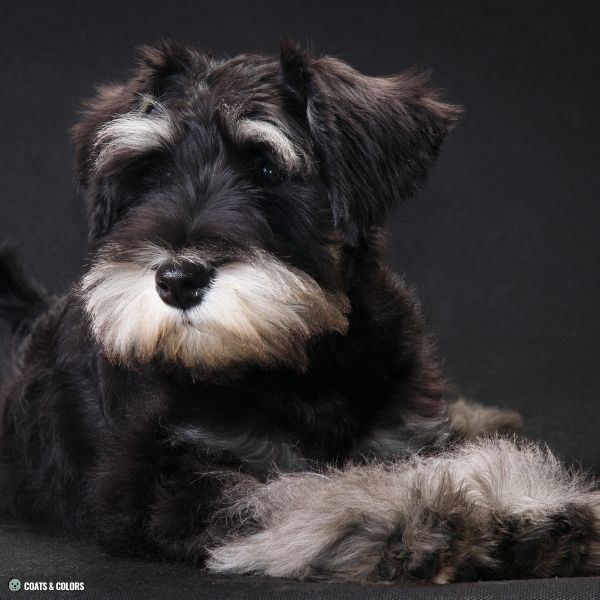


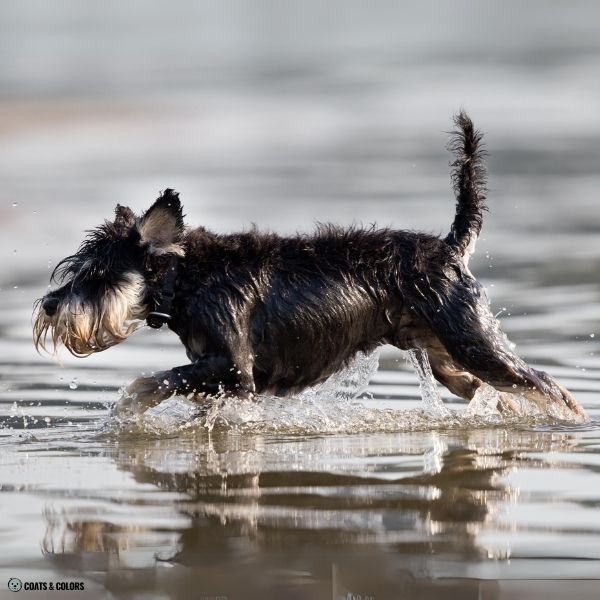
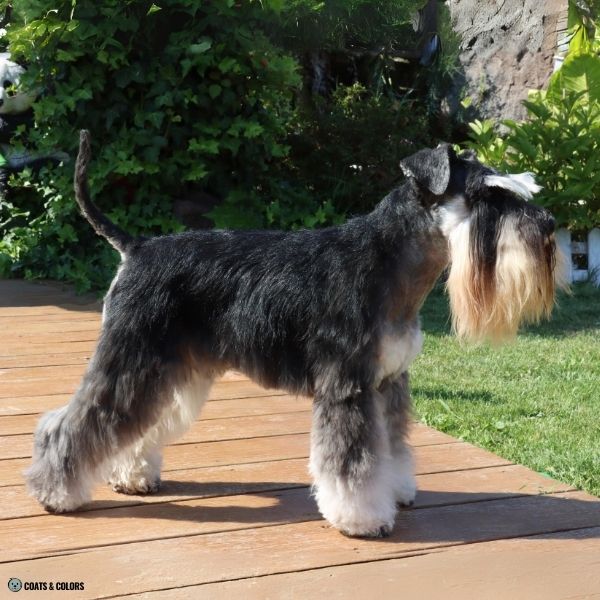
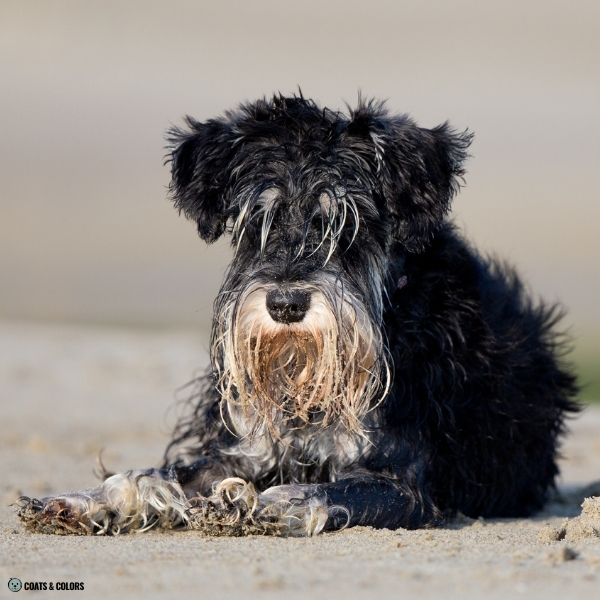
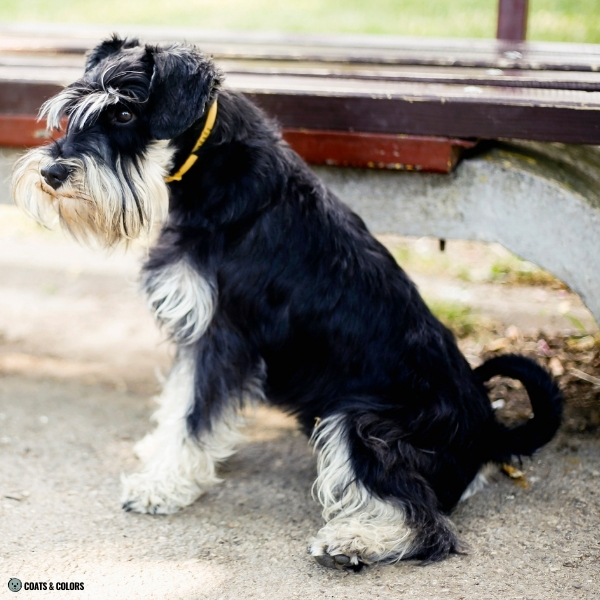
Black and silver is a breed term for a black-based tan point pattern (E/- ky/ky at/at).
The coat is solid black with crisp pale phaeomelanin markings.
[The black section of the coat] fades out to light gray or silver white in the eyebrows, whiskers, cheeks, under throat, inside ears, across chest, under tail, leg furnishings, and inside hind legs.”
AKC Breed Standard
“…the aim in breeding is a black top coat with black undercoat, white markings over the eyes, on the cheeks, at the beard, at the throat, in two divided triangles at the front of the chest, on the front pasterns, on the feet, on the inside of the hind legs and [under the tail].”
FCI Breed Standard
Black & Silver Miniature Schnauzer Markings
The black-based tan point pattern in Schnauzers combined with their very pale tan intensity turns what should be a black & tan pattern into a black & silver pattern.
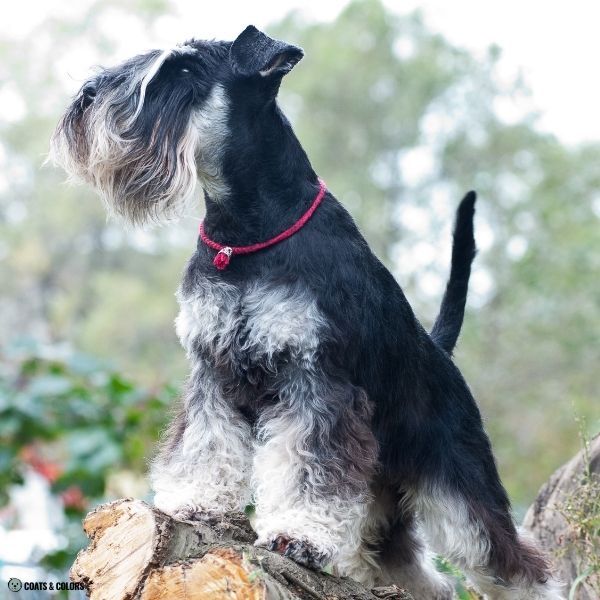
This does not affect the placement of tan markings in their coat. They have a mostly solid black coat with phaeomelanin markings above the eyes, on the cheeks, throat, chest, lower legs and bum.
The silver markings should be crisp and the FCI even requires “clearly separated triangles on the chest“.
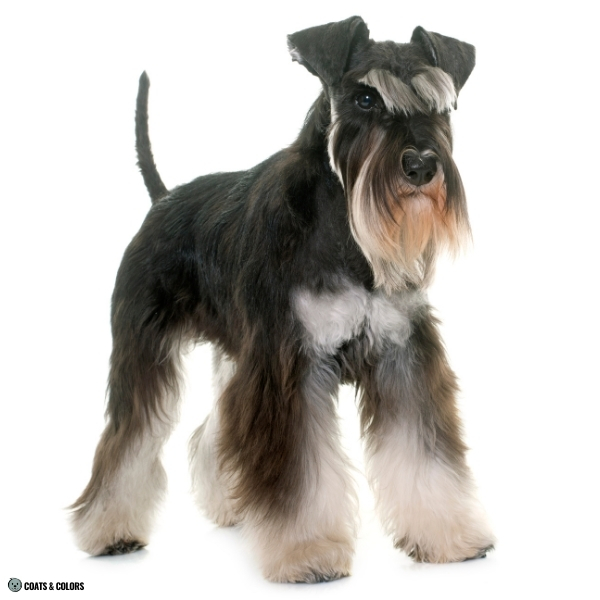
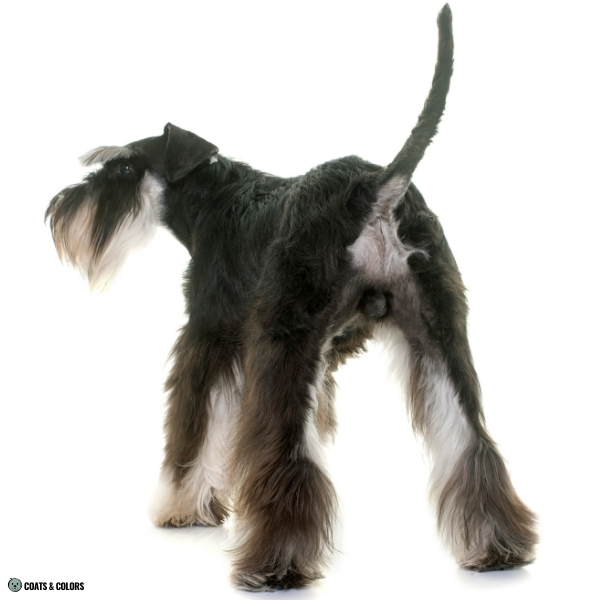
It’s normal for the black portion in this kind of pattern to not always give solid black body coat or super crisp edges against the silver markings. Some dogs have pale undercoat or sooty markings.
Very dark agouti (“salt & pepper“) can sometimes border on black & silver. That’s no surprise since tan points are basically just agouti without the hair banding. The FCI standard specifies that a true black & silver has to have solid black coat on its forehead, neck and outer sides of the ears.
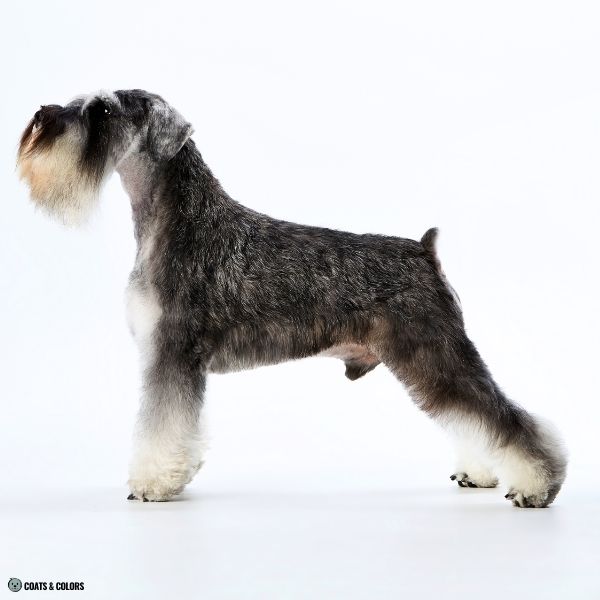
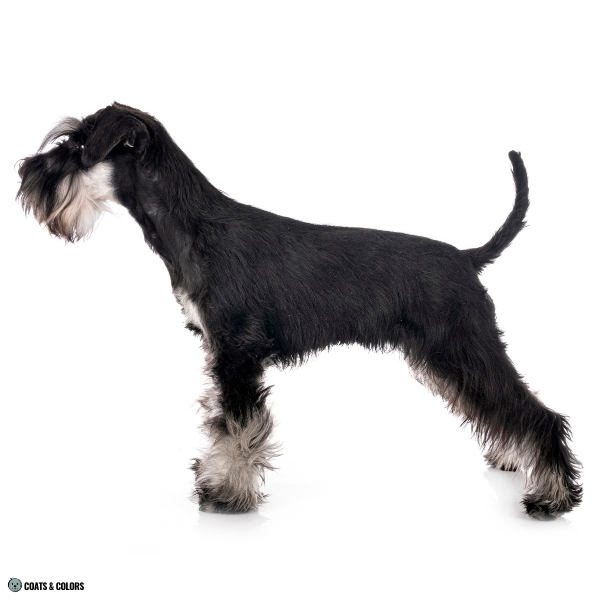
“The black and silver generally follows the same pattern as the salt and pepper. The entire salt and pepper section must be black.”
AKC Breed Standard
Typical face markings in a black & silver pattern should include a nose bar and black coat under the eyes and clear silver markings on the cheeks and above the eyes.
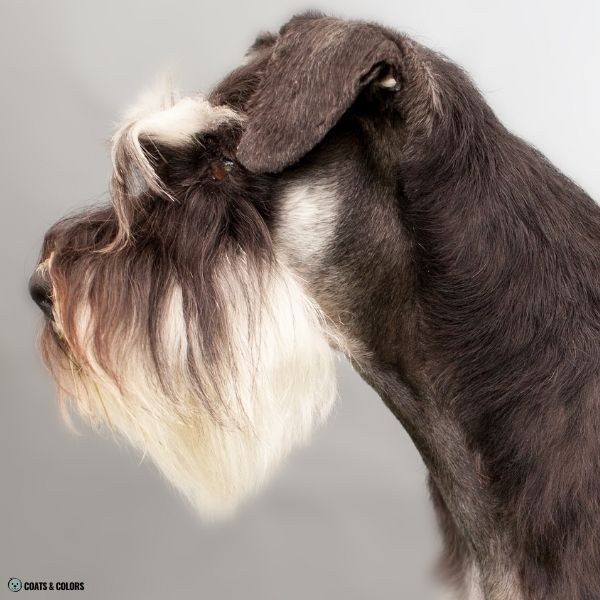
When the FCI standard talks about a “dark mask“, they likely meant these face markings. However, some Miniature Schnauzers really do have a black mask which will cover some of their muzzle pattern.
“In all colour variations there must be a dark mask, which should adapt harmoniously to the respective colour.”
FCI Breed Standard
Black & Silver Miniature Schnauzer Nose Color
A dog’s nose gets its color only from its eumelanin pigment.
Dogs with a black-based pattern will always have a black nose. Also, any visible skin pigment like eye rims and lips and even the nails and paw pads will be black.
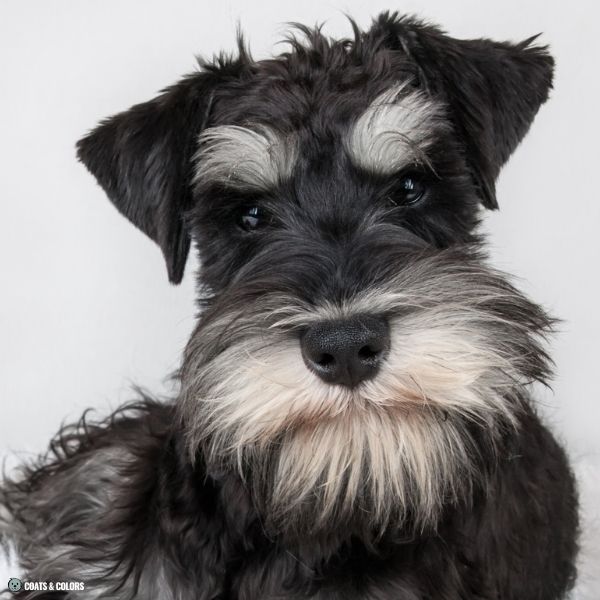
“[…] the nose must be solid black.”
AKC Breed Standard
“Well developed nose leather, always black“
“Lips: Black, smoot and tight-fitting to the jaws.”
FCI Breed Standard
Black & Silver Miniature Schnauzer Eye Color
Eye color is determined by eumelanin color and pigment density.
A black-based Miniature Schnauzer pattern will typically come with dark brown eyes.

“Eyes – Small, dark brown and deep-set.”
“Faults – Eyes light and/or large and prominent in appearance.”
AKC Breed Standard
“Eyes […] dark with lively expression”
“Faults: […] Light, too large or round eyes.”
FCI Breed Standard
Black & Silver Miniature Schnauzer Coat Type
Miniature Schnauzers are double-coated with a short coat and furnishings.
Their topcoat is harsh and wiry with their leg furnishings a little longer and softer.
Some Miniature Schnauzers have a long-coat variant. And even fewer have a curly variant.
All Schnauzers are fixed for furnishings, they always have a beard and bushy eyebrows.
“Coat: Double, with hard, wiry, outer coat and close undercoat. […] Furnishings are fairly thick but not silky.”
AKC Breed Standard
“The coat should be wiry, harsh, and dense. […] The hair on the limbs tends to be less harsh. […] Typical characteristics are the not too soft beard on the muzzle and the bushy eyebrows ...”
FCI Breed Standard

L/-
short-haired
F/F
furnished
N/N
non-curly
Black & Silver Miniature Schnauzer Genetics
Gray Miniature Schnauzers have a black-based tan point pattern:
Basic Pattern
The genetics behind the black and silver pattern:
-
-
E/--
ky/ky-
aw/--
agouti
"pepper & salt"
-
-
at/--
tan points
"black & silver"
-
-
a/a-
recessive black
"black"
-
-
-
KB/--
dominant black
"black"
-
-
-
e/e-
recessive red
" white"
-
-
The A, K and E locus combined are responsible for a dog’s basic pattern. They tell pigment cells when and where to produce either eumelanin or phaeomelanin.
at/at
tan point
ky/ky
wild-type
E/-
wild-type
A Locus
Mini Schnauzer with a tan point pattern are at/at at their A locus.
K Locus
To express their tan point pattern, the Mini needs to be ky/ky at their K locus.
E Locus
At the E locus, there is either a wild-type E or a melanistic mask Em allele. Never e/e.
The wild-type E enables normal pattern expression.
With at least one copy of Em, there will be a black mask. Masks may produce face markings that do not align with the breed standard requirements since masks will cover some of the dog’s silver markings.
Pigment Colors
To get black and silver coloring, you need black eumelanin and white phaeomelanin.
Some genes determine the actual colors in a dog’s pattern.
D/D
non-diluted
B/-
black
Intensity
white
Phaeomelanin
Schnauzer patterns always come with very pale silvery white phaeomelanin.
Eumelanin
Dogs with a B/- D/D genotype will produce black eumelanin.
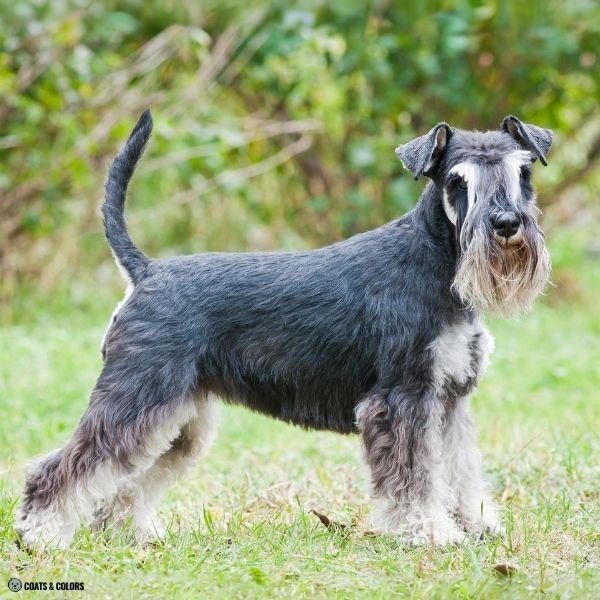
Other Traits
Traditionally, Miniature Schnauzers do not have white markings or merle.
Some traits can modify a pattern by removing pigment or further modifying colors:
S/S
solid
m/m
non-merle
Other
graying
White Markings
Solid Miniature Schnauzers have a solid coat (S/S).
If they had piebald spotting (sP), they would be called “black & silver parti“.
“Between [the body coat color and the silver-white markings] there exists a natural body coat color. Any irregular or connecting blaze or white mark [under the throat and across the chest] is considered a white patch on the body, which is also a disqualification.”
AKC Breed Standard
Merle
Purebred black Miniature Schnauzers do not come in merle.
Graying
Some Schnauzers, especially in the US, have progressive graying. This can produce an off-color in black and silver dogs since it would gradually fade all the black pigment to a gray color.
“The stripped portion is free from any fading or brown tinge.”
AKC Breed Standard
More Miniature Schnauzer Colors
Purebred Miniature Schnauzers come in other colors than black and silver:
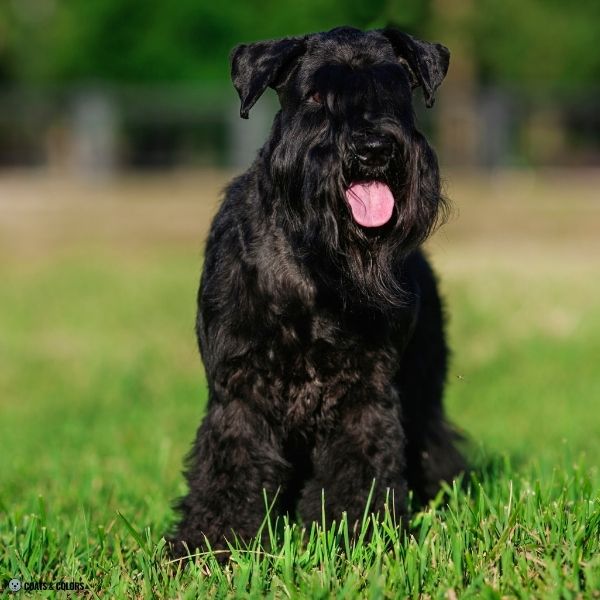
Black Miniature Schnauzer
Black Miniature Schnauzers are dominant black.
Pattern #1: E/- KB/- (dominant black)
Pattern #2: E/- ky/ky a/a (recessive black)
Eumelanin: B/- D/D (non-diluted black)

Salt & Pepper Miniature Schnauzer
A breed term for a black-based agouti pattern.
Pattern: E/- ky/ky aw/- (agouti)
Eumelanin: B/- D/D (non-diluted black)
Intensity: white
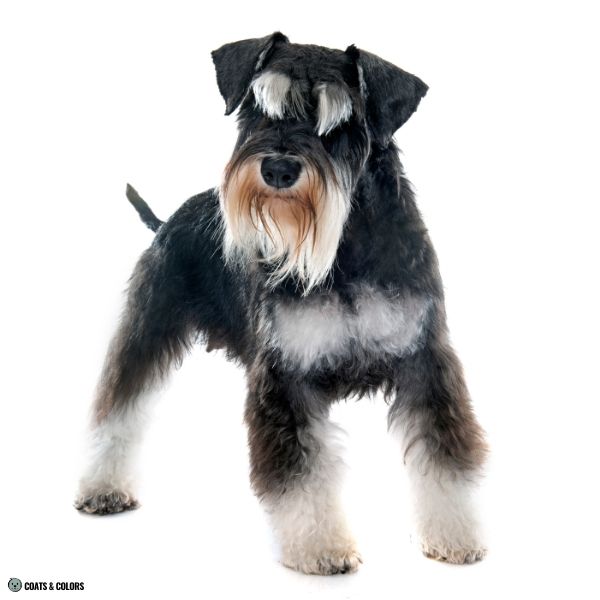
Black & Silver Miniature Schnauzer
A breed term for a black-based tan point pattern.
Pattern: E/- ky/ky at/at (tan point)
Eumelanin: B/- D/D (non-diluted black)
Intensity: white
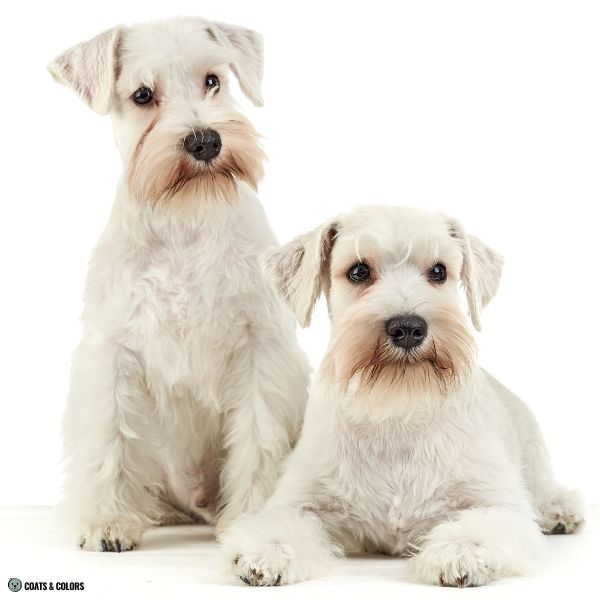
White Miniature Schnauzer
A solid white recessive red pattern.
Pattern: e/e (recessive red)
Eumelanin: B/- D/D (non-diluted black)
Intensity: white

Learn More
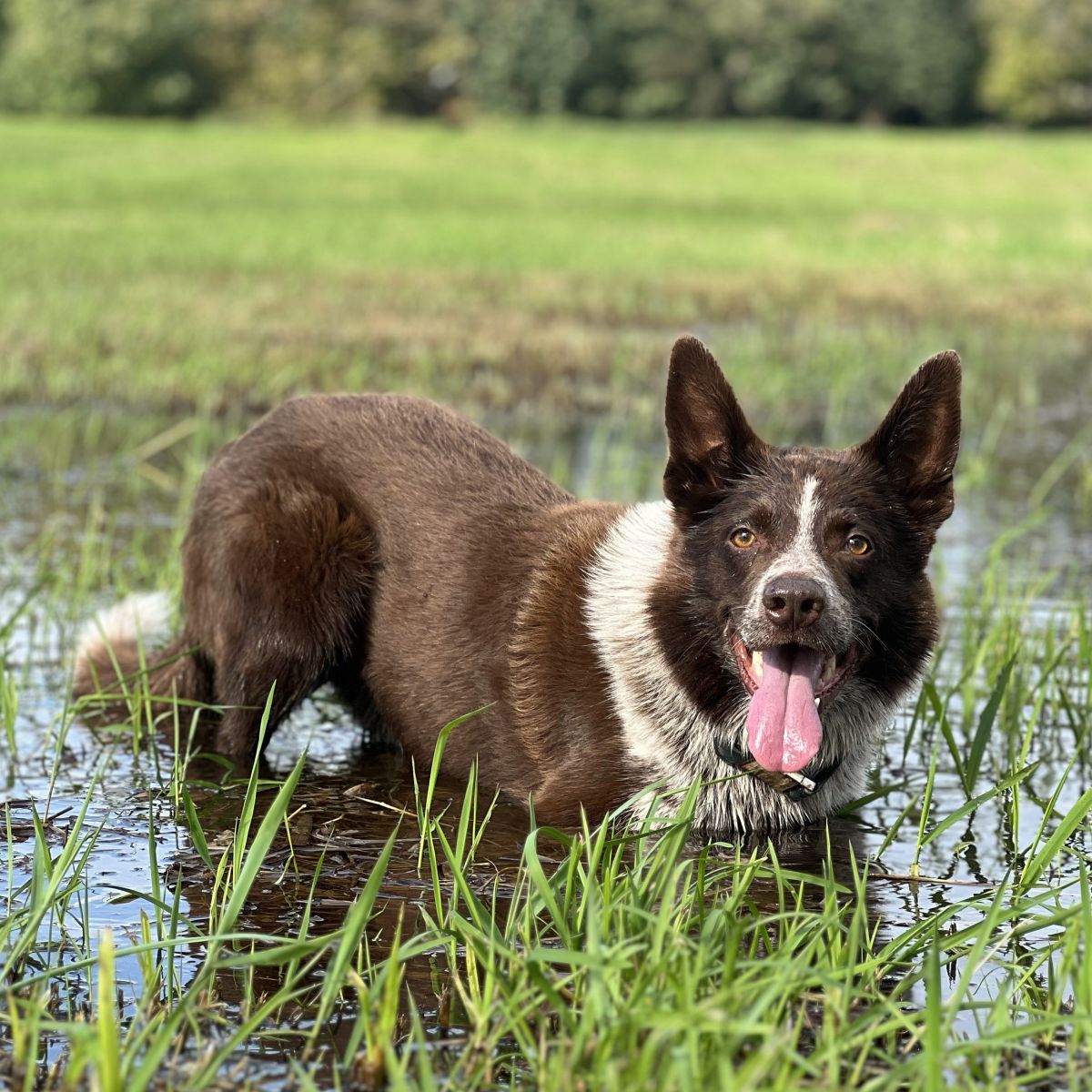
Hi! I’m Steffi. I am a biologist and a big time dog nerd. You are curious about coat color genetics? You’ve come to the right place! Read more.



